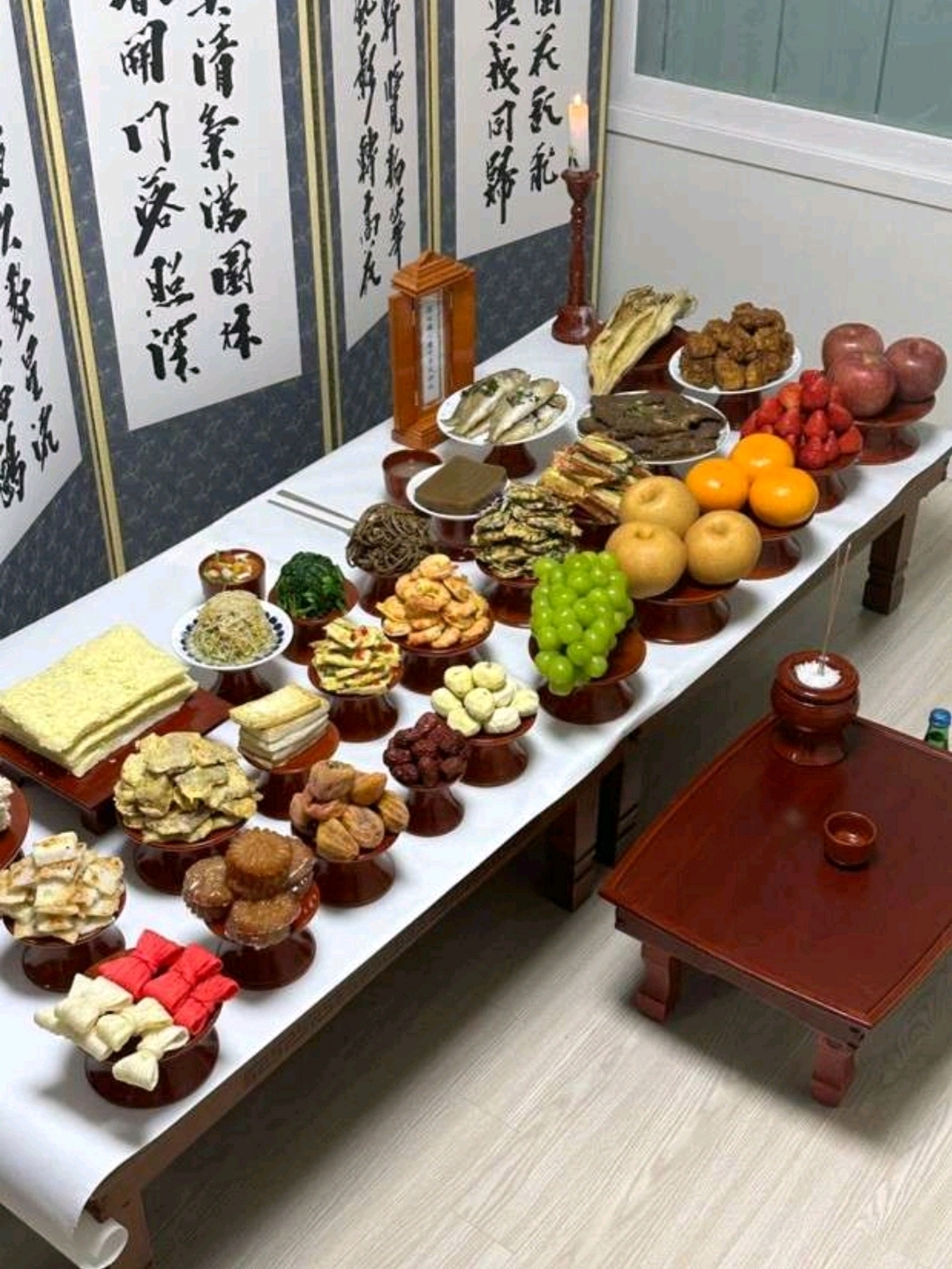
Jesa (제사) is a cherished Korean tradition that pays homage to deceased family members and ancestors. Family values, respect, and love for elders are rooted in Korean culture, and Jesa serves as a way to honor and remember those who have passed away and are not with us anymore. Typically, Koreans celebrate this ceremony twice a year by visiting their family homes to perform the ritual. Lunar New Year is a particularly important time for this memorial gathering. According to Korean culture and beliefs, the soul of the deceased does not immediately leave the earth after death. Instead, it is believed to remain among the living family members for up to five generations, making it an integral part of the family. Jesa reinforces the connection between the living and the dead, thereby strengthening familial bonds.
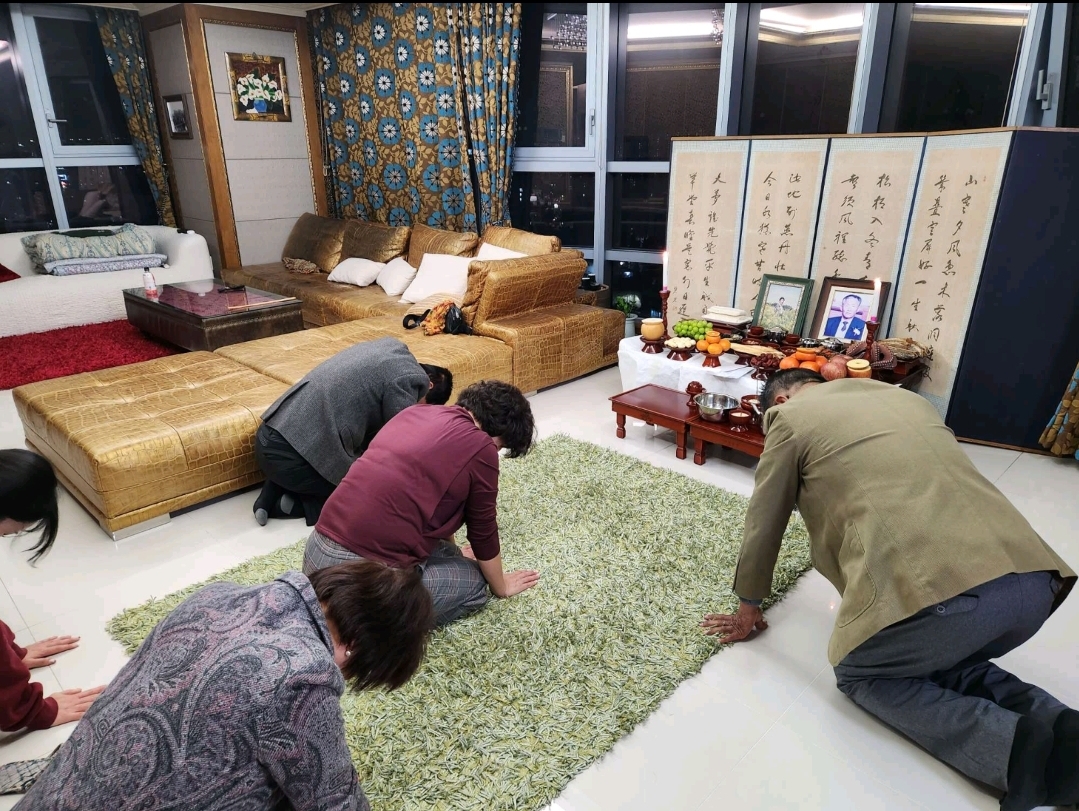
Who Can Perform Jesa?
Hana Kye, my Korean friend from university, is really passionate about this Korean culture. Despite living in Rome, she returns to Korea every year for the Jesa ceremony in the Lunar New Year. She is really excited to have a great chance of reuniting with many of her family members and eating good food. She explains, “Jesa is a ritual that is typically performed by the oldest male member of the family. My father is the first son in his family. He performs this ceremony for his father, grandfather, and his ancestors. Female family members are not allowed to perform this ritual. So, it falls solely on the shoulders of male family members. My father has two other brothers but since they are younger, it is his responsibility to honor his ancestors. Also, in case a family member has female heirs, other male relatives should step in to perform the ritual." Hana's father's friend is an example of this case. According to her, "He holds Jesa also for his uncle who has no sons but three daughters.”
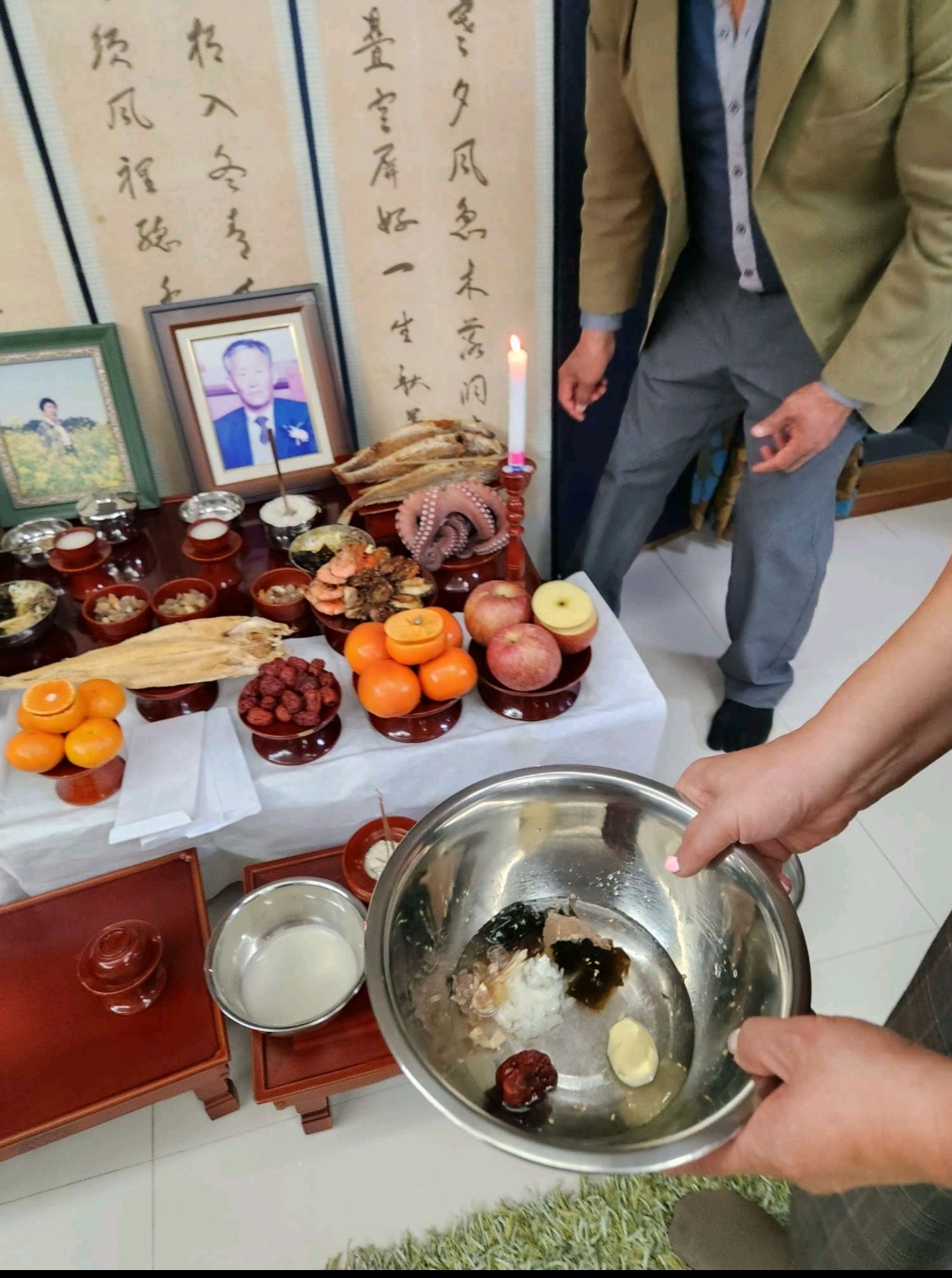
What Foods are Served in Jesa?
Jesa, like many other traditions, has changed in recent times and varies from family to family. Depending on the importance of it, this ceremony takes from 30 minutes to two hours. Once the location is chosen, the women of the family start preparing the food from one week in advance. While some basic rules are generally followed, food preferences vary from region to region. It includes fruits, ancestors’ favorite food, and fresh and recently harvested foods. These offerings are arranged in a specific order, with white fruits, rice, and meat on the west side of the table and red fruits, soup, and fish on the east side.
The first step in the ceremony is to set up a food altar. The first row, at the front of the table, is for fruits such as Korean pears, apples, and dates. The second row, in the middle, contains meat, dried fish, and vegetables. The third row, closest to the ancestors' names, contains soup and rice for each deceased family member. The last row has papers with their ancestors' names written on them, one vertical line for each member. Another table is set up in front of the food altar, usually smaller in size, where a specific type of Korean rice wine called Cheongju (which means “clear alcohol”) is placed for use during the ceremony. Finally, an ancestral incense burner packed with sand is placed on the floor to summon the dead ancestors with its scent.
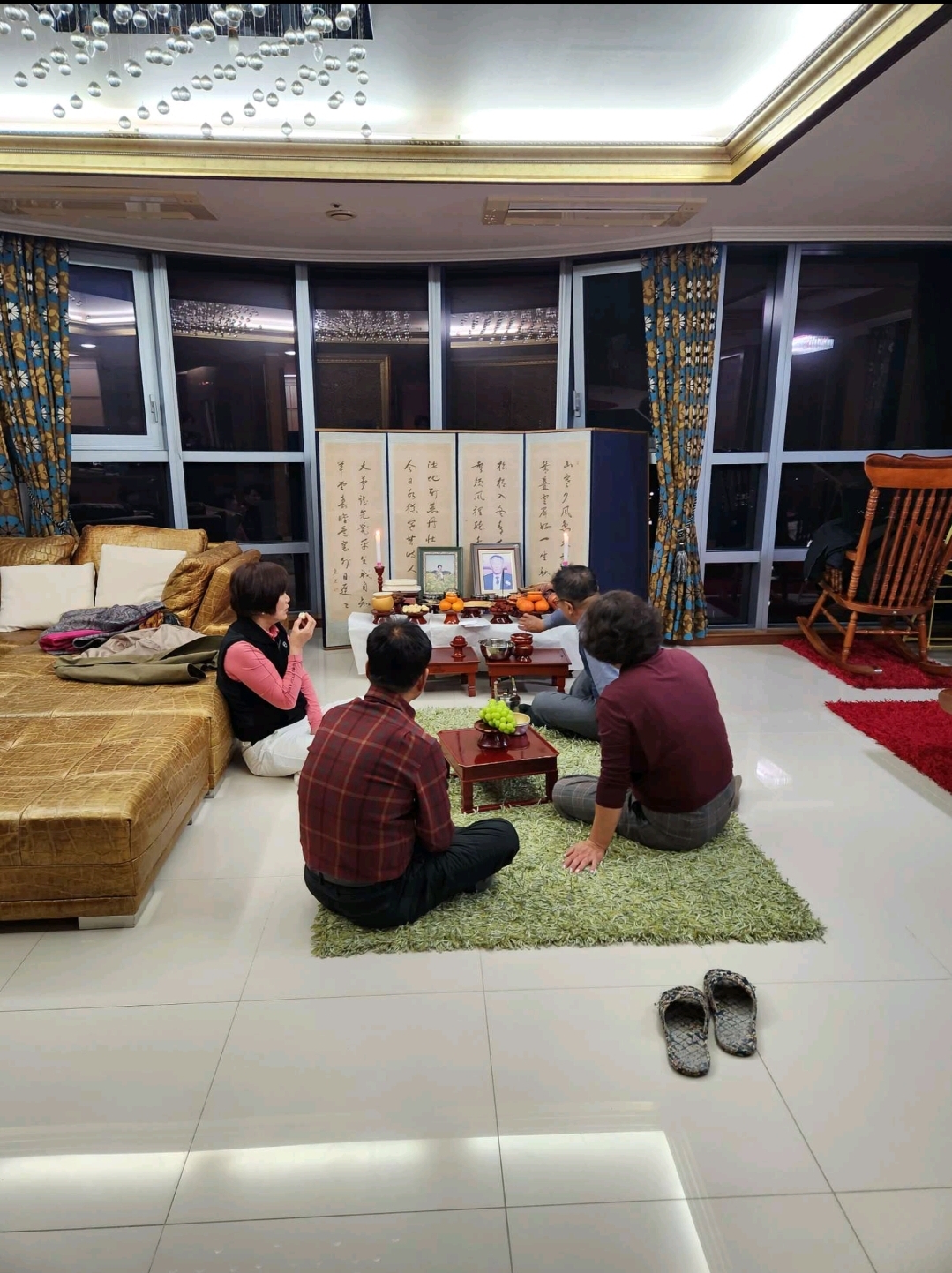
How is Jesa Performed?
In Korea, it is customary to wake up early and complete the Jesa ceremony as nobody eats anything until the end of the ritual. According to my friend Sara, who has been living in The Republic of Korea since 2006, "My husband is the eldest, therefore he performs Jesa. We wake up really early in the morning so that we don't end up eating late. It is important to be clean and wear Korean traditional clothes, Hanbok. During the ceremony, my husband and I offer rice wine to his ancestors, and then he serves the main food. All the people in the room bow twice, and then everyone stays silent for a moment. We set the written prayer on fire and bid farewell to all of his ancestors until next year. We also serve liquor to honor my husband's ancestors."
Sara's description highlights the attention to detail and reverence for ancestors that are integral parts of Jesa. It also emphasizes the significance of traditional clothing and the role of family members in performing the ritual. Jesa reinforces the connection between the living and the dead, thereby strengthening familial bonds and keeping Korean traditions alive. Although in modern days, some families have simplified the ceremony or modified it to suit their needs, Jesa remains a significant tradition that demonstrates respect and love for family members who have passed away.
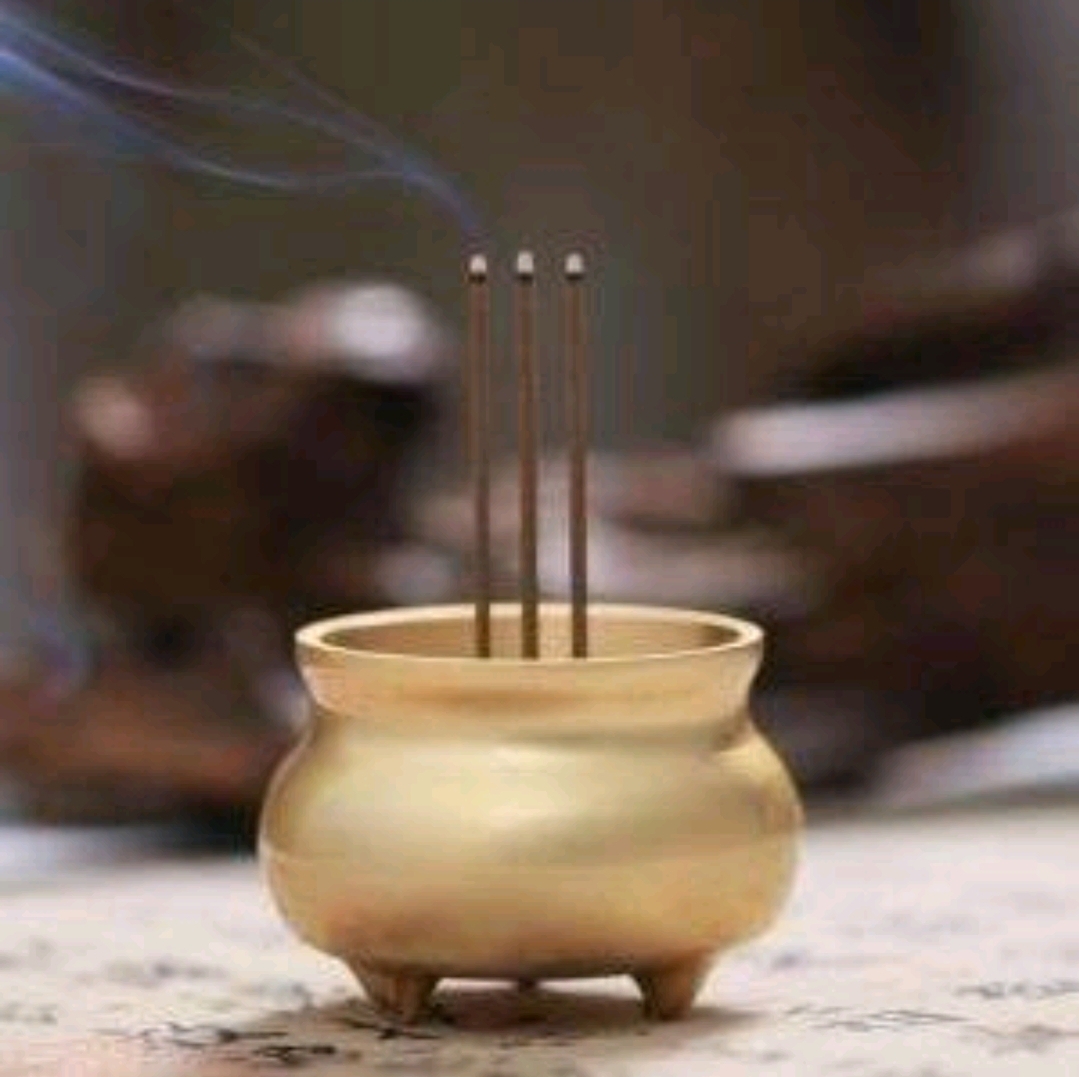
How about this article?
- Like26
- Support1
- Amazing0
- Sad0
- Curious0
- Insightful7


